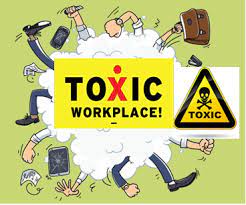
Lord, make me an instrument of thy peace. Where there is hatred, let me sow love. – Francis of Assisi
What is the price and value of peace to you? To what extremes do you go to keep the peace at work or home? Are you, by nature, the peacemaker during a conflict? What do you give up in the process? How far are you willing to go to maintain and protect it? These are all challenging questions- especially for leaders.
Research by SHRM late last year revealed that among 1,000 employees, two-thirds (66%) say they have experienced or witnessed incivility in their workplace. The most common forms of incivility witnessed or experienced included addressing others disrespectfully, interrupting or silencing others while speaking (34%), and excessing micromanaging or monitoring.
The Oxford Dictionary defines peace as “freedom from disturbance; tranquility.” However, what constitutes peace for one person in the workplace may look quite different from the person in the cubicle beside you. One person’s “disturbance” may be another person’s means of achieving the same goal as you, just in a different way. If offending you is the price of achieving the same goal, they are not bothered by that.
Patrick Lencioni once observed, “When team members trust each other and know that everyone is capable of admitting when they are wrong, then conflict becomes nothing more than the pursuit of truth or the best possible answer.” So, how do you reconcile this as a leader who desires results while maintaining a healthy balance of peace and disturbance? I believe some honest conversations are necessary to achieve this. Let’s explore a few organizational questions for consideration.
Have proper boundaries and trust been established?
Healthy boundaries in your workplace begin with healthy relationships. Click To Tweet Healthy boundaries in the workplace don’t happen by chance. When relationships are prioritized and developed, suspicions over motives are diminished. How have you intentionally made space for healthy and necessary dialogue that, with a few, may look like the absence of peace?
When trust is established, healthy relationships can thrive. Trust is established not by keeping your people isolated and separated but by bringing them together. As a leader, you can’t just hope this happens; you must facilitate and prioritize it.
Additional Resource: Read my article The Centrality of Trust in Leadership
What accountability measures do you have in place?
Healthy workplaces exist because accountability is front and center. When your team members have high levels of buy-in, they will have high standards they will fight to preserve. This means holding each other accountable for the culture and workflow.
When this exists in your organization, the responsibility of accountability is shared – in other words, it isn’t all solely upon your shoulders. It’s shared and mutual, as it should be. D.A. Abrams observed, “Accountability is the difference between good leaders and great leaders.” Which do you want to be?
Additional Resource: Read my article Five Excuses That Kill Accountability
Do you and your team understand the difference between peace and conflict?
For many, it makes them uncomfortable when things are unsettled or out of alignment. This may lead to feelings that the workplace is toxic or less desirable. Clearly, toxic workplaces are not healthy, nor is this what I am speaking of here.
A healthy workplace culture can thrive with the right balance of tension and civility. It’s not an either-or situation. It can be healthy when team members come together in trust and with an open mind, indicating that we are a team of people committed to each other and our goals and objectives.
Conflict will occur as long as the “peacekeepers” see the “disrupters” (those with no malicious intent or otherwise purposefully sabotaging your culture) as the enemy. However, seeing them as partners in the cause for the same goal can drastically improve things.
Walking this tightrope as a leader is about building bridges while prioritizing relationships and communication.
Additional Resource: Conflict Resolution to Communication Resolution
How are you keeping the peace today?
©2025 Doug Dickerson









